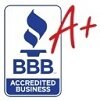When you hear a buyer say they will purchase your property “as-is,” it sounds simple: no repairs, no upgrades, no extra work. But what does “as-is” really mean, and how do cash buyers handle common problems like termites, foundation damage, or outdated systems?
If you are considering selling a home in less-than-perfect condition, here is what you need to know about the process, the issues that matter most, and how cash buyers evaluate these properties.
What Does “As-Is” Mean in Real Estate?
Selling “as-is” means you are offering the property in its current state, with all faults, known or unknown. The seller will not make repairs, and the buyer accepts responsibility for any issues after closing.
For homeowners, this option is often appealing because:
- You avoid costly and time-consuming repairs.
- The transaction typically moves faster.
- Cash buyers in particular are used to dealing with distressed properties.
But there is a tradeoff. Buyers usually factor the repair costs and the risk of hidden issues into their offers.
Common Problems Found in “As-Is” Homes
While every property is unique, certain issues show up again and again when homes are sold “as-is”:
- Structural damage: Foundation cracks, uneven floors, sagging beams.
- Pest infestations: Termites, rodents, or carpenter ants.
- Plumbing problems: Leaks, corroded pipes, or poor water pressure.
- Electrical issues: Outdated wiring, code violations, or unsafe breaker panels.
- Roofing and siding wear: Leaks, missing shingles, wood rot.
- Water damage and mold: Often hidden behind walls or under flooring.
- HVAC failures: Broken or outdated heating and cooling systems.
One of the biggest concerns for Louisiana homeowners is termite damage, often tied to foundation issues. We have covered this in detail in our article on recognizing termite damage and related foundation problems.
How These Issues Affect Your Home’s Value
Buyers do not just look at the surface problems. They also consider what could be hiding behind the walls. Even if you have spotted only minor damage, experienced investors know that the full repair bill can climb quickly once demolition begins.
For example, a house with visible water stains on the ceiling might need more than a roof patch. It could require drywall replacement, attic insulation cleanup, or even electrical rewiring if water reached the wiring.
That uncertainty makes buyers cautious, and it is why “as-is” offers are usually lower than the price of a move-in-ready home.
How Cash Buyers Handle “As-Is” Properties
Unlike traditional buyers who may require inspections, appraisals, and mortgage approval, cash buyers are prepared to take on risk. Here is how they typically approach “as-is” homes:
- Quick property walkthroughs are often enough to spot major red flags.
- Repair cost estimates are drawn from contractors, past projects, and experience.
- Risk buffers set aside extra funds for hidden problems that may appear after closing.
- Adjusted offers subtracting the repair and risk costs from the after-repair market value.
- Fast closings once a price is agreed, deals can close in days, not months.
This process makes it easier for sellers to move forward, even when the home needs serious work.
What Sellers Should Expect
If you are thinking about selling “as-is,” here are a few things to keep in mind:
- Offers will reflect the condition. Do not expect full market value since buyers have to account for repairs.
- Be transparent. Disclose known problems. It builds trust and prevents legal trouble later.
- Do not over-invest in repairs. Sometimes, small, inexpensive fixes like patching drywall or painting can help, but major renovations are usually not worth the cost if you plan to sell quickly.
- Weigh speed versus price. If avoiding months of stress and repairs matters more than squeezing out every last dollar, a cash “as-is” offer may be the best solution.
Example: Termite Damage in Baton Rouge
We have seen cases where a home looked fine on the outside, but once the siding came off, entire sections of wood framing were eaten away by termites. Foundation piers were leaning, and subflooring was spongy. The initial repair estimate was far below the actual cost.
For the seller, this was overwhelming. For a cash buyer, it was manageable because the repairs could be rolled into the project. This is a good example of how “as-is” sales protect homeowners from dealing with major repairs themselves.
For a full breakdown of how termite and foundation problems show up in Louisiana homes, check out our detailed article here.
Final Thoughts
Selling “as-is” is not about giving up. It is about choosing convenience, speed, and peace of mind. While you will not get top dollar, you also will not have to deal with costly repairs, endless showings, or drawn-out negotiations.
Wondering what your “as-is” house might be worth? Reach out to Rally Home Buyers for a no-obligation cash offer and move forward with peace of mind.

